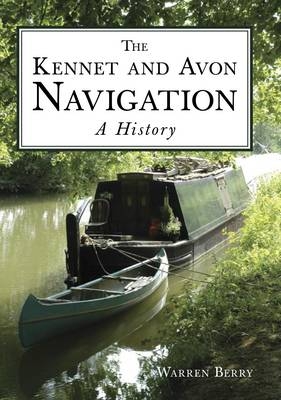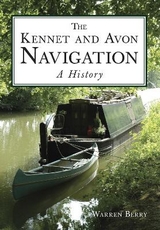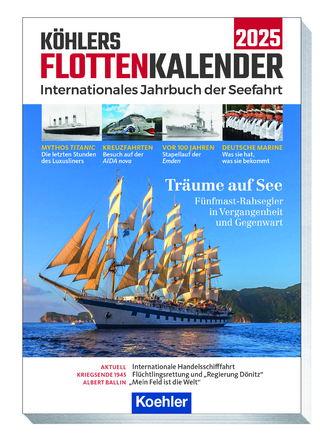
Kennet & Avon Navigation
Seiten
2009
Phillimore & Co Ltd (Verlag)
978-1-86077-564-2 (ISBN)
Phillimore & Co Ltd (Verlag)
978-1-86077-564-2 (ISBN)
- Titel erscheint in neuer Auflage
- Artikel merken
Zu diesem Artikel existiert eine Nachauflage
A history of Kennet & Avon canal navigation
The Kennet and Avon navigation was built to link Bristol with London, via Reading and the river Thames. The canal section took some 16 years to construct and was finally completed in 1810, although piecemeal trading was already taking place on completed parts long before that date. It was considered a major feat of Georgian engineering, incorporating many attractive stone and iron bridges, a 500-yard brick-lined tunnel, purpose-built pumping stations incorporating both steam- and water-powered pumps, and two magnificent aqueducts that carried the canal over the Avon valley. But the most spectacular structure on the navigation was the 19 lock flight that climbs straight up the side of Caen Hill, and makes a striking visual impression. This chronological narrative begins with the two river navigations, and assesses the financial, technical and political difficulties that had to be overcome before they were linked. The story of how such a huge undertaking was planned and funded is told, and further chapters describe how canal and associated structures were built.
This important waterway enabled extensive trade activity to take place across the southern half of England, and an overview is given of what it was like to live and work on the navigation. Later chapters show why the Kennet and Avon eventually declined as a trading concern and how it was saved from total closure and eventually restored. It has become the biggest success story of canal restoration in recent times. Inland waterways and their associated heritage are fashionable subjects, and a well-written history of the Kennet and Avon that will appeal to general readers as well as the enthusiast is now overdue. This comprehensive account contains a range of visual matter, such as photographs, wharf and other plans, diagrams and engravings, as well as plans of the more important trading craft used on the navigation. Where appropriate, primary information from the Kennet and Avon Canal Trust's large archive of documents and photographic images has been drawn upon.
The Kennet and Avon navigation was built to link Bristol with London, via Reading and the river Thames. The canal section took some 16 years to construct and was finally completed in 1810, although piecemeal trading was already taking place on completed parts long before that date. It was considered a major feat of Georgian engineering, incorporating many attractive stone and iron bridges, a 500-yard brick-lined tunnel, purpose-built pumping stations incorporating both steam- and water-powered pumps, and two magnificent aqueducts that carried the canal over the Avon valley. But the most spectacular structure on the navigation was the 19 lock flight that climbs straight up the side of Caen Hill, and makes a striking visual impression. This chronological narrative begins with the two river navigations, and assesses the financial, technical and political difficulties that had to be overcome before they were linked. The story of how such a huge undertaking was planned and funded is told, and further chapters describe how canal and associated structures were built.
This important waterway enabled extensive trade activity to take place across the southern half of England, and an overview is given of what it was like to live and work on the navigation. Later chapters show why the Kennet and Avon eventually declined as a trading concern and how it was saved from total closure and eventually restored. It has become the biggest success story of canal restoration in recent times. Inland waterways and their associated heritage are fashionable subjects, and a well-written history of the Kennet and Avon that will appeal to general readers as well as the enthusiast is now overdue. This comprehensive account contains a range of visual matter, such as photographs, wharf and other plans, diagrams and engravings, as well as plans of the more important trading craft used on the navigation. Where appropriate, primary information from the Kennet and Avon Canal Trust's large archive of documents and photographic images has been drawn upon.
Warren Berry is the curator of the Kennet and Avon Canal Trust museum in Devizes, Wiltshire. He contributes to the Kennet and Avon Canal Trust journal.
| Erscheint lt. Verlag | 15.6.2009 |
|---|---|
| Zusatzinfo | Illustrations |
| Verlagsort | Stroud |
| Sprache | englisch |
| Themenwelt | Sachbuch/Ratgeber ► Geschichte / Politik ► Regional- / Landesgeschichte |
| Natur / Technik ► Fahrzeuge / Flugzeuge / Schiffe ► Schiffe | |
| Geisteswissenschaften ► Geschichte ► Regional- / Ländergeschichte | |
| ISBN-10 | 1-86077-564-0 / 1860775640 |
| ISBN-13 | 978-1-86077-564-2 / 9781860775642 |
| Zustand | Neuware |
| Haben Sie eine Frage zum Produkt? |
Mehr entdecken
aus dem Bereich
aus dem Bereich
internationales Jahrbuch der Seefahrt
Buch | Softcover (2024)
Koehler in Maximilian Verlag GmbH & Co. KG
23,95 €



